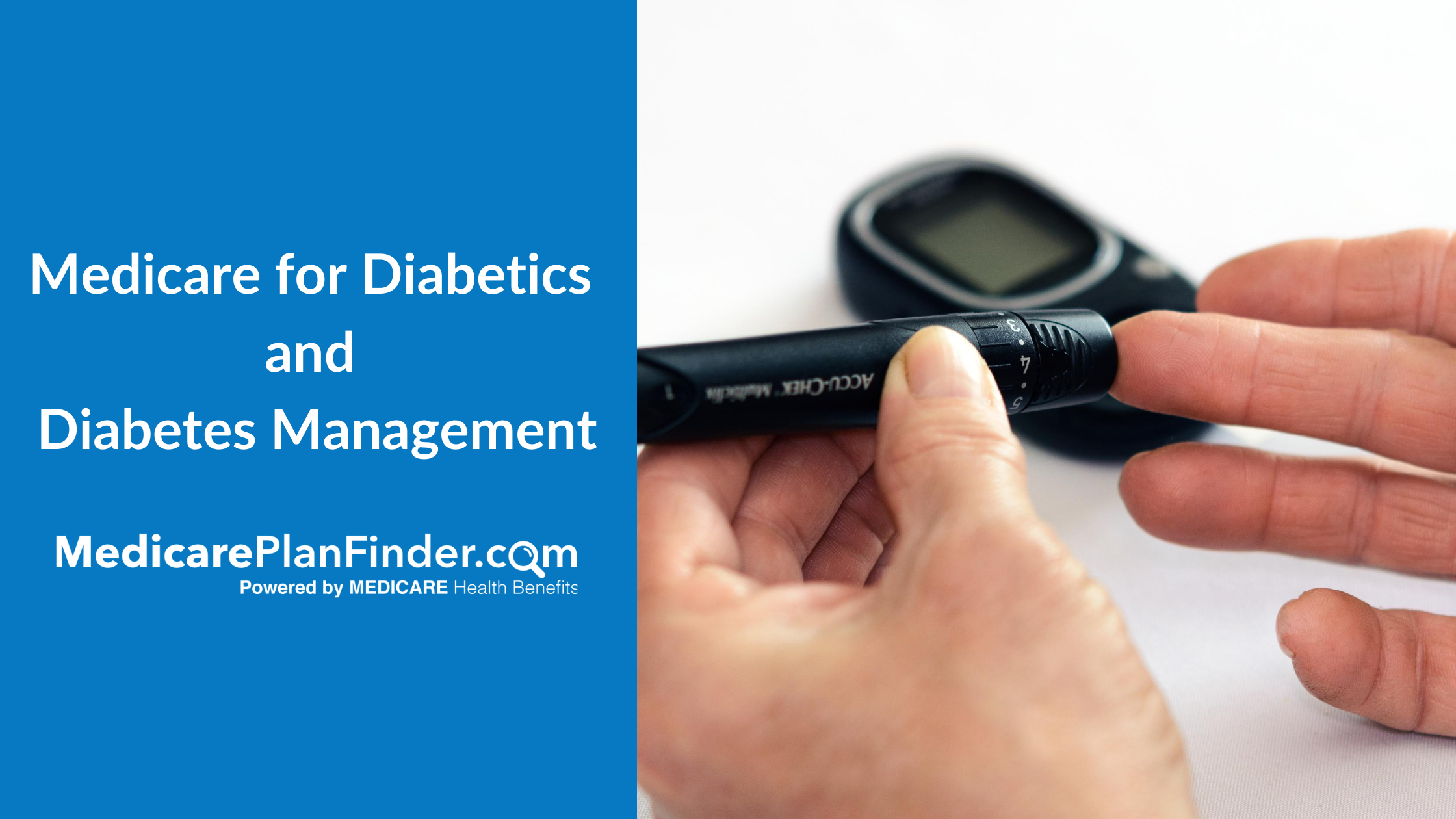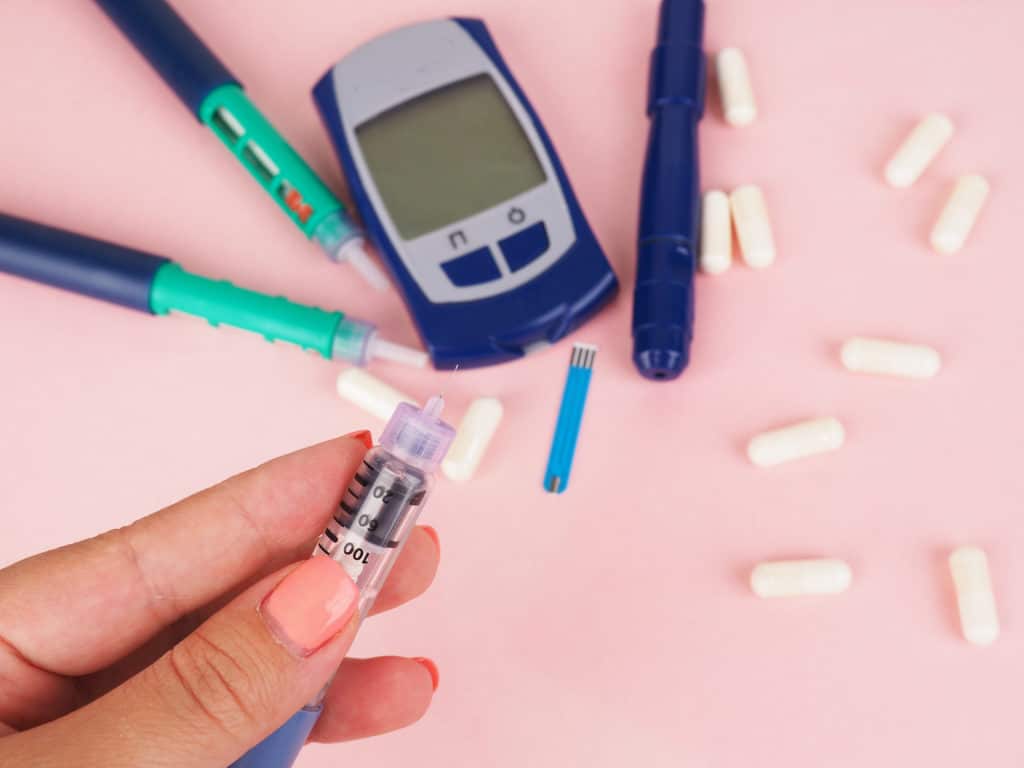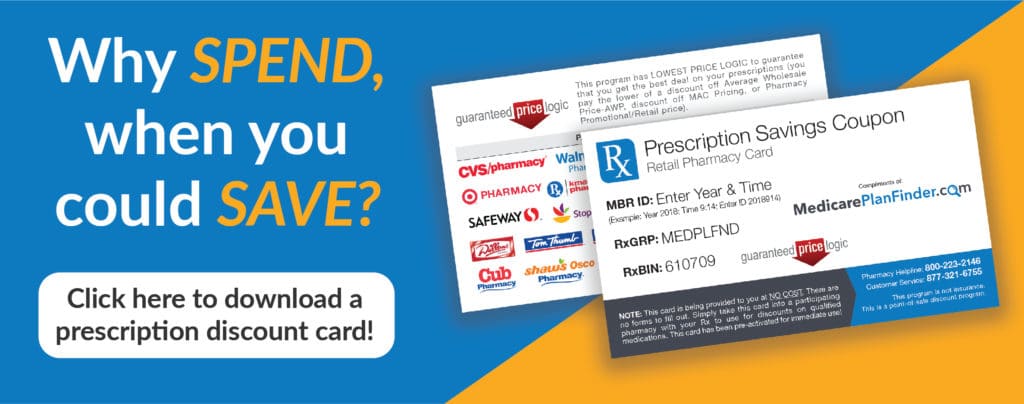
Medicare for Diabetics and Diabetes Management
February 21, 2019Diabetes is one of the largest health issues facing America and affects over 12 million older adults. In fact, the World Health Organization estimates that diabetes will be the seventh leading cause of death by 2030. The risk of developing diabetes increases with age, so it’s important to understand the role of Medicare and diabetes management.
Medicare for Diabetics and Medications

If you are diabetic, or even pre-diabetic, your doctor may prescribe you medications like:
- Metformin
- Glucophage
- Glumetza
- Sulfonylureas
- Meglitinides
- Thiazolidinediones
Original Medicare (Part A and B) does not cover prescription drugs. If you are diabetic, you could end up having a high out-of-pocket cost for your medications. A Part D plan is a great alternative to help you save money and get the coverage for medications you need.
You can enroll in a Part D plan on top of your Original Medicare or purchase a Medicare Advantage plan. Medicare Advantage plans can offer benefits like prescription drug coverage, hearing, vision, or dental coverage and even things like meal delivery and transportation to doctor appointments or the pharmacy.
Does Medicare cover insulin?
Insulin can be divided into Original Medicare will only cover insulin that is needed for an external insulin pump and may be covered as Durable Medical Equipment.
Without insurance, the most popular form of insulin (Lantus) can cost over $500. According to GoodRx, the average copay for Lantus is $37.50-$67.70 with insurance.
Original Medicare does not cover other forms of insulin including pens, syringes, or needles. If you need other forms of insulin, a Part D plan or a Medicare Advantage plan with a prescription drug benefit can help!

What does Medicare cover for diabetics?
Medicare Part B covers diabetes self-management training (DSMT) for those who were recently diagnosed. Part B will also cover:
- Blood sugar monitors
- Blood test strips
- Lancet devices
- Lancets
- Orthotic shoes or inserts
- External insulin pumps
However, there may be limits on how much or how often you can get these supplies.
Medicare Part D covers diabetes supplies including:
- Syringes
- Needles
- Alcohol swabs
- Gauze
- Inhaled insulin devices
Diabetic Supplies Delivered Directly to Your Door
You can get your diabetic supplies delivered directly to your door. However, you have to use an approved Medicare mail-order supplier if you want to utilize your Medicare coverage. If you prefer to purchase your supplies in a store, Medicare will cover the costs if you buy them at a Medicare-enrolled store or pharmacy.
Types of Diabetes and Symptoms

If you are diagnosed with diabetes, it means that your body struggles to process the sugars in the foods you eat. As a result, your blood sugar levels rise. This means your body cannot produce enough insulin (or produce it in the right way) depending on which type of diabetes you have.
Type 1
Type 1 occurs when your pancreas cannot produce insulin (a hormone produced in the pancreas which regulates the glucose in your blood). It is typically developed at a young age and accounts for less than 10% of cases. If you have type 1, you will need to balance your blood sugar with insulin doses through a shot, pen, or pump. You will also need to pay close attention to the foods you eat and your daily activity level
Warning signs and symptoms of type 1 diabetes include:
- Going to the bathroom more frequently
- Being thirstier
- Having mood changes
- Struggling to see or other vision problems
- Feeling fatigued
- Losing weight without a change in diet or exercise
Type 2
Type 2 is the most common type of diabetes and accounts for 90% of diabetic patients. On the bright side, it is the most preventable and treatable form of diabetes. Unlike type 1, people with type 2 can produce insulin, just usually not enough. This means insulin shots, pens, or pumps may not be needed. Instead, you can monitor your blood sugar and manage insulin levels through medication.
The warning signs and symptoms of type 2 are very similar to type 1, they just take longer to develop. These symptoms include frequent urinating, thirst, mood changes, vision issues, fatigue, and unexplained weight loss. Some symptoms can take several years to surface which means regular check-ups and monitoring your blood sugar levels is crucial, especially if you are diagnosed with prediabetes.
Another sign of type 2 is prediabetes. If you are prediabetic, you probably have high blood sugar, and your body will start to reject insulin slowly. However, your blood sugar levels are not high enough to be considered type 2 diabetic just yet. Eating better, exercising, and losing weight can help prevent the development of type 2 diabetes in the future.
Effects of Diabetes
All types of diabetes should be taken seriously as they can have severe complications and effects on your body. Without proper treatment and management, diabetes can lead to the following health issues:
Heart Disease
Diabetes can raise your blood pressure and cholesterol. Nearly 75% of people with diabetes suffer from some sort of heart-related condition. This can include heart attacks, stroke, coronary heart disease, and many more.
Kidney Damage
Your kidneys are full of small blood vessels. Diabetes can damage these vessels, which impacts your kidney’s overall function. According to the National Kidney Foundation, 30% of type 1 diabetes patients will experience kidney failure.
Hypoglycemia
Hypoglycemia is when your blood sugar levels reach a dangerously low level. These low levels can result in falls, seizures, or even cause you to enter a coma.
Nerve Damage
High blood sugars can make it difficult for your blood vessels to take blood to certain parts of your body. If blood does not get to certain nerve endings, they can be partially or permanently damaged.
Eye Damage
Blurry vision is a warning sign of diabetes. This is because the blood vessels attached to your retinas are getting damaged. If diabetes is left untreated, this condition could worsen.
How to Test for Diabetes
If you have a body mass index over 25, are older than 45, or have been diagnosed with prediabetes, you should be tested for diabetes annually. The most common tests are as follows:
Glycated Hemoglobin (A1C) Test
This blood test shows your average sugar levels for the past 2-3 months. It measures the percentage of sugars attached to hemoglobin (an oxygen-carrying protein in red blood cells). The higher level of blood sugars equates to the higher number of hemoglobin with attached sugars. Two A1C tests of levels greater than 6.5% indicate diabetes. One A1C test between 5.7% and 6.4% indicates prediabetes. Anything under 5.7% is normal.
Random Blood Sugar Test
A random blood sugar test is exactly that – random. There is no fasting and it does not matter when (or what) you last ate. A blood sugar level of 200 mg/dL or higher indicates diabetes.
Fasting Blood Sugar Test
This test requires you to fast overnight. The next morning you take a blood sugar test. Sugar levels less than 100 mg/dL is normal. Anything between 100 and 150 mg/dL indicates prediabetes. If you take two separate tests at different times, and the results are over 126 mg/dL, you may have diabetes.
Oral Glucose Tolerance Test
This test requires you to fast overnight and check your blood sugar levels the next morning. Directly after, you will drink a sugary liquid. Over the next two hours, you will check your levels again. A level of less than 140 mg/dL is normal. After two hours, a level between 140 and 199 mg/dL indicates prediabetes, and anything over 200 mg/dL indicates diabetes.
How to Prevent Diabetes
You can’t change your genes, age, or past behavior, but you can take control of other factors, including:
Exercise: Did you know losing 10 kg (about 22 pounds) over a ten year period can lower your risk of diabetes by 33%? You should aim to get 30 minutes of exercise at least five days a week. If you haven’t been active, start slowly and work towards an overall goal.

Diet: A diet that is high in nutrients and low in glycemic loads are great for preventing diabetes. Green vegetables, beans, nuts, seeds, and fruit can help maintain your blood sugar. However, foods with added sugars, refined grains, and trans fats can have the opposite effect. Avoid fried foods and red meats when possible. Try a healthy soup!
Stress Less/Sleep More: When you are sleep deprived or have unusual sleep patterns, you increase your risk of obesity. As we previously mentioned, obesity plays a large factor in developing diabetes. Stress can impact your sleep schedule and make you toss and turn in the night. Plus, stress releases several hormones that increase your blood sugar. Pay attention to your sleep patterns and stress levels and visit a doctor if you have continued issues.
Diabetes and Medicare Coverage
Diabetes costs America more than $327 billion every single year. If you are diagnosed with diabetes, you may have high out-of-pocket costs. As we mentioned, Part D and Medicare Advantage plans can help save you money and provide the benefits and coverage you need. If you have any questions, or interested in enrolling in a Part D or MA plan, fill out this form or call us at 844-431-1832.


